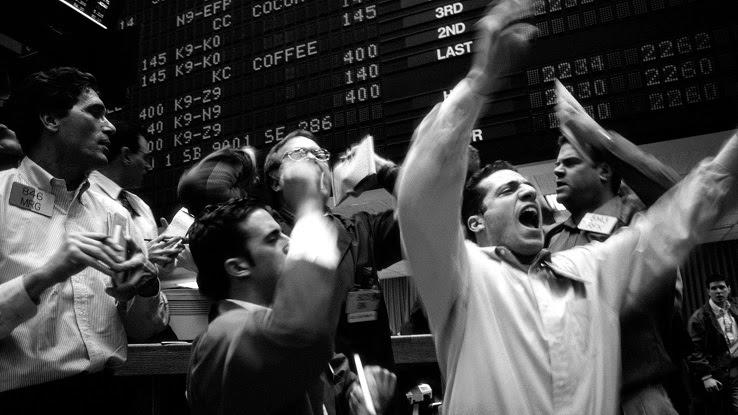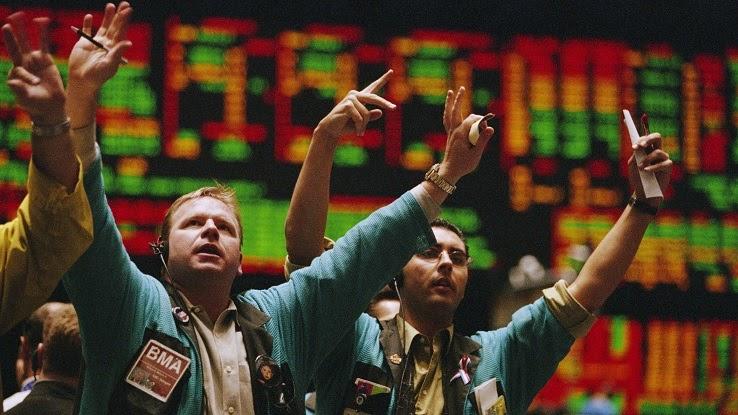
More than half of American households have made some type of investment in the stock market. If you’re part of that group, you’re likely concerned about the risk of your stocks losing value — but it helps to know that there are certain investing strategies you can adopt that may actually reduce that risk.
A vertical spread is one type of options trading strategy that can mitigate risk. Options trading allows you to pay a premium for the right to purchase a stock at a locked-in price, called the strike price, by a future date that’s known as the expiration date. Through a vertical spread you can make a profit on the stocks you already own, even if you don’t end up selling them — making this a seriously appealing type of investment strategy. But before you get started, it’s important to learn the basics of vertical spreads and the benefits of the four main types.
What Are Vertical Spreads in Options Trading?

Vertical spreads allow investors to prepare for potential changes in the market without offloading potentially valuable stocks every time there’s a dip in the market. With this strategy, investors don’t have to simply sit back and accept the risk of loss.
To get started, it helps to understand some essential concepts in options trading and vertical spreads. Vertical spreads are based on two types of options. In a call option, an investor purchases the right to buy a stock for the strike price in the future. In a put option, an investor purchases the right to sell a stock for the strike price in the future. In a vertical spread scenario, an investor pays the premium for two calls, two puts or a combination of both on the same stock at the same time with the same expiration date. One of the calls or puts always has a lower strike price than the other.
Rather than losing an infinite amount of money should the price of the stock rise or fall more than expected by the expiration date, the loss is limited to the range of the premiums plus the difference between the two strike prices multiplied by the number of options purchased. Options are usually purchased and sold in increments of $100.
There are four major vertical spreads you can use strategically in different market scenarios, and they each have unique advantages.
Bull Calls

A bull call takes place when an investor buys one call option for a stock and sells another call option for the same stock. The second option has a higher strike price. Because call options don’t have to be executed — purchasing one only guarantees you the right to buy at a predetermined price, but you can opt out — the most money the investor can lose is the total cost of the two premiums. If the stock does increase in value, the investor can earn the value of the difference between the two calls minus the cost of the two premiums.
This is a great strategy to employ when market volatility or problems with a company make it harder to earn large gains in the short term for a stock that’s typically stable. The stock is expected to earn more value eventually, but, in the short term, there are only expected to be marginal increases in value. For example, Coca-Cola is usually considered to be a stable stock, but a temporary dip in sales may be a great time to use a bull call for this stock.
Bull Puts

In a bull put, an investor buys one put option at the same time as they buy another put option at a cheaper strike price. Regardless of how the market performs, an investor will gain the profit from the difference between the two premiums. In the predicted circumstance of a loss, the most the investor will lose is the difference between the two strike prices less the profit made from the premiums.
Bull puts are best used when stock markets are relatively stable. Investors who already own the right stocks stand to make profits from selling options. Savvy investors can also purchase options that allow them to buy growing stocks for less than market value at the expiration date.
Here’s one example. Apple is a very valuable stock that’s almost always predicted to become more valuable in the future. Many investors make regular profits by completing bull puts on Apple. Because the profit is made on selling the one put option, the investor never loses if they don’t act on the option they purchased. If the investor does act on the purchased option, they buy a valuable stock for less than market value in a purchase that’s partially financed by the premium they paid when buying the option.
Bear Calls

A bear call vertical spread involves an investor selling one call option at the same time that they buy a different call option with a higher strike price. This strategy is useful when there’s a potential for loss. The most the investor can gain is the premium on the option contract they sold, less the premium they paid for contracting the purchase. Ideally, the investor earns more on the premium that was sold than the cost of the purchased premium. The most the investor can lose is the difference between the two strike prices minus the total premium profit.
Use this strategy when the stock market is volatile and the value of the stock in question is expected to decrease slightly. For example, Facebook, which is usually a stable stock, was experiencing instability due to misinformation spread on the platform during a string of contentious elections and the COVID-19 pandemic. When the company’s CEO appeared before Congress, investors were understandably nervous. For investors working with Facebook shares, a bear call was a great option for mitigating potential losses without committing to getting rid of potentially valuable stocks in an unpredictable market.
Bear Puts

Investors get involved in bear puts when they buy a put option at the same time they sell another put option for a cheaper strike price. Both options have the same expiration date in this scenario. The most the investor can lose is the profit from the difference between the two premiums. And, the most the investor can gain is the positive difference between the two strike prices minus the premiums paid.
This strategy is implemented when there’s a small expected loss in a stable market that’s trending towards volatility. Here’s an example. eCommerce is a booming industry, and Shopify is one of the top platforms in this industry. Suppose the government introduced new legislation that would increase the cost of running an eCommerce business. Shopify and other industry leaders already proposed a solution, but investors were becoming more averse to the industry due to the anticipated changes. An investor who already owned stock in Shopify may do a bear put spread. If the stock decreases, the investor will profit. If the stock increases, the most the investor will lose is the premium paid, because no investor would act on an option that would cause a loss.
Vertical spreads are multifaceted scenarios that allow investors to mitigate losses and maximize profits. In favorable circumstances, investors can use the profits they earn from selling options to purchase more shares of a good stock at less than market value. If a vertical spread doesn’t work out, an investor stands to lose the money they paid for a premium and potentially sell a stock for less than market value.





